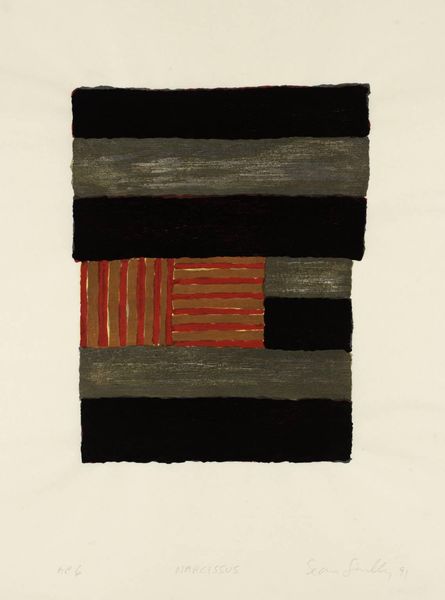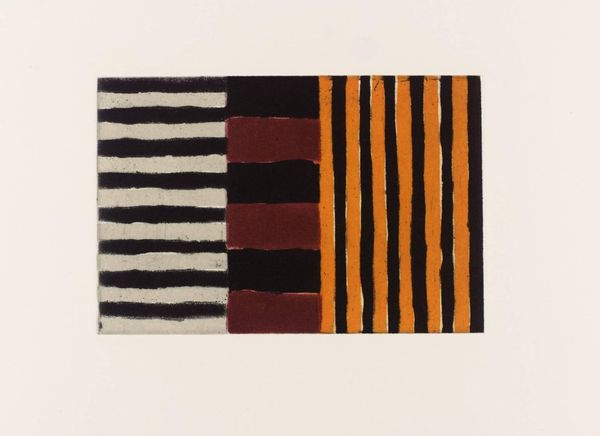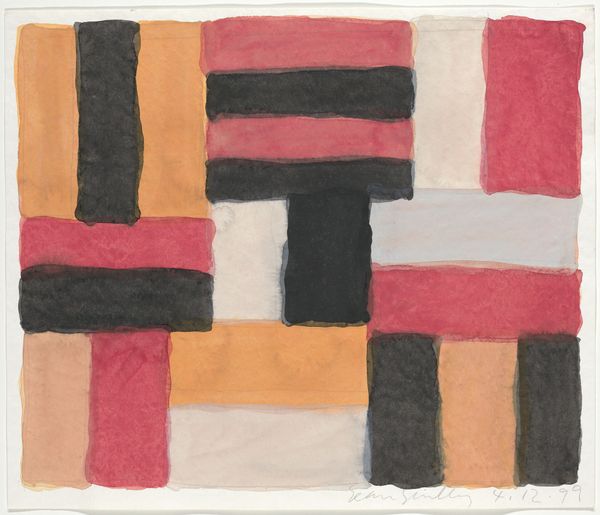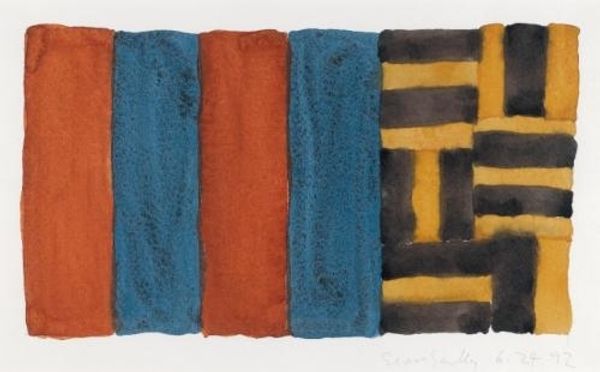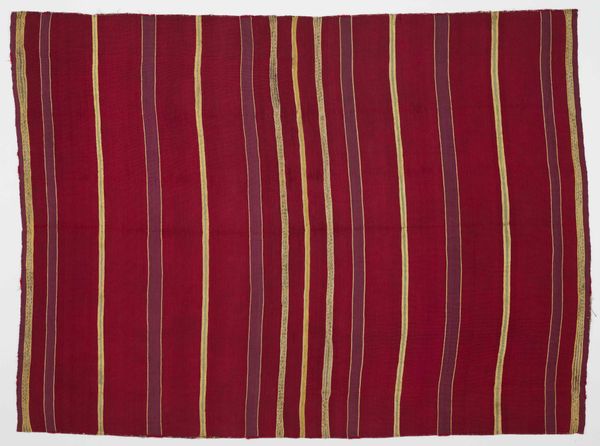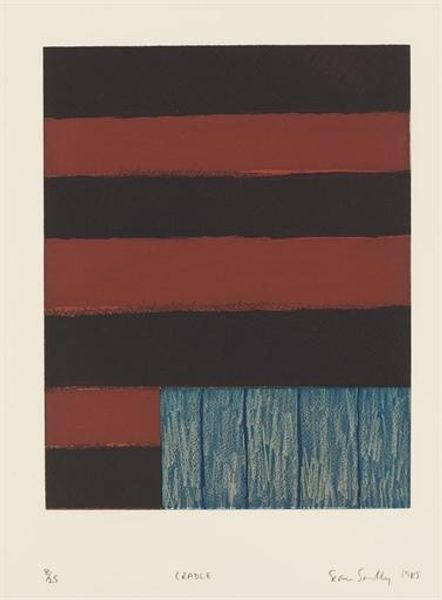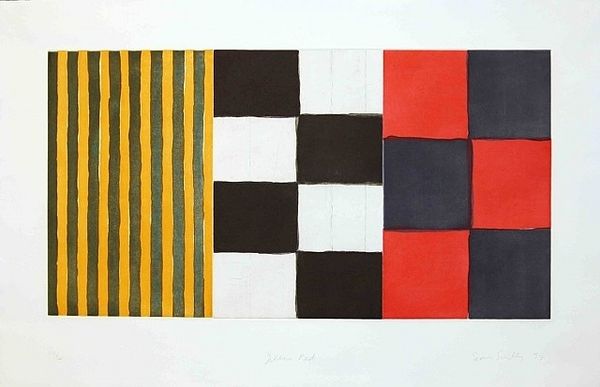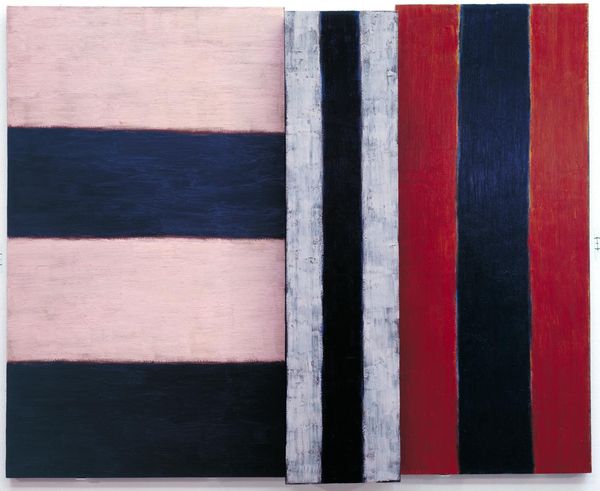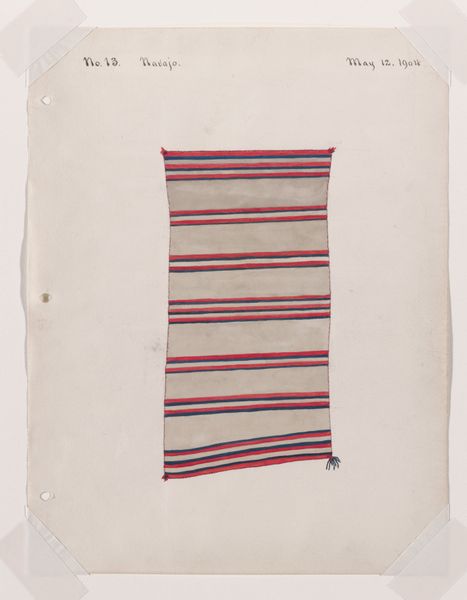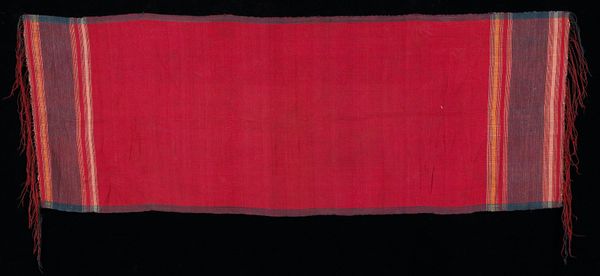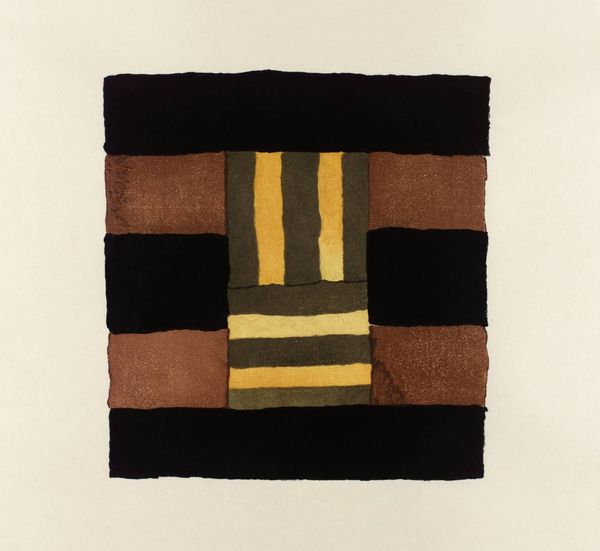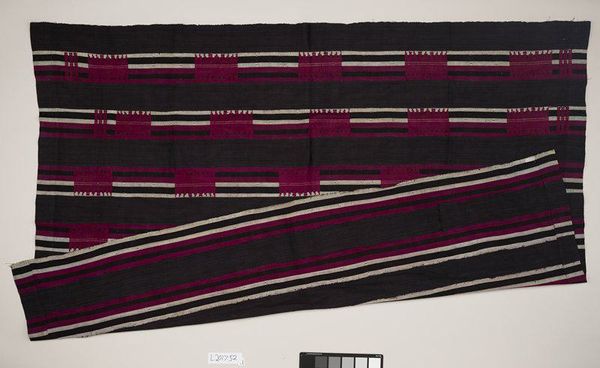
Copyright: Sean Scully,Fair Use
Curator: Here we have a work by Sean Scully, simply titled "Untitled," painted in 1996 using acrylic on, unusually, textile. What's your initial read? Editor: It strikes me as visually quite bold. The sharp contrast between the vivid red vertical stripes and the stack of black and white rectangles has an immediate graphic impact. It's simultaneously soothing and unsettling. Curator: Absolutely. And thinking about the material choice – textile rather than canvas – encourages us to see this not just as a picture, but as a made thing. Scully's process is crucial here. He builds up these layers of paint on fabric, pushing against the traditional definition of painting as a window onto another world. He's making it so tangible. Editor: The choice of vertical stripes – those repeating lines – brings to my mind prison bars. Their repetition is only broken by the geometry of stacked horizontal rectangles. Are we dealing with barriers, perhaps? Contrasts between containment and freedom? Curator: It's interesting that you interpret the geometry of this abstraction. Scully's work can be aligned to movements like Colour Field painting and Hard-edge painting. So we should look into the processes inherent in those materials and movements. There is something industrial in its production. There is certainly also the sense of labour that went into painting. Editor: I agree there is a strong element of abstraction, and Scully, of course, avoids straightforward narrative, but the stark contrast of the elements generates feeling and an iconography, whether deliberate or not. These shapes trigger reactions on a very deep cultural level, inviting associations with order, confinement, opposition... I cannot help reading this image as imbued with social critique. Curator: And isn’t that tension between surface and meaning exactly where Scully finds his power? To make such visually spare artwork become a complex statement. He merges the handmade quality of the woven textile with these strong lines to give meaning to the visual, which in return affects the means of production. Editor: Indeed. By considering these different perspectives—materials, artistic history, and their iconography—we hopefully offer a better, more thorough reading of the art piece. Curator: I completely agree. Viewing artworks such as these with an interdisciplinary perspective adds not only to its value but the artist’s processes overall.
Comments
No comments
Be the first to comment and join the conversation on the ultimate creative platform.
